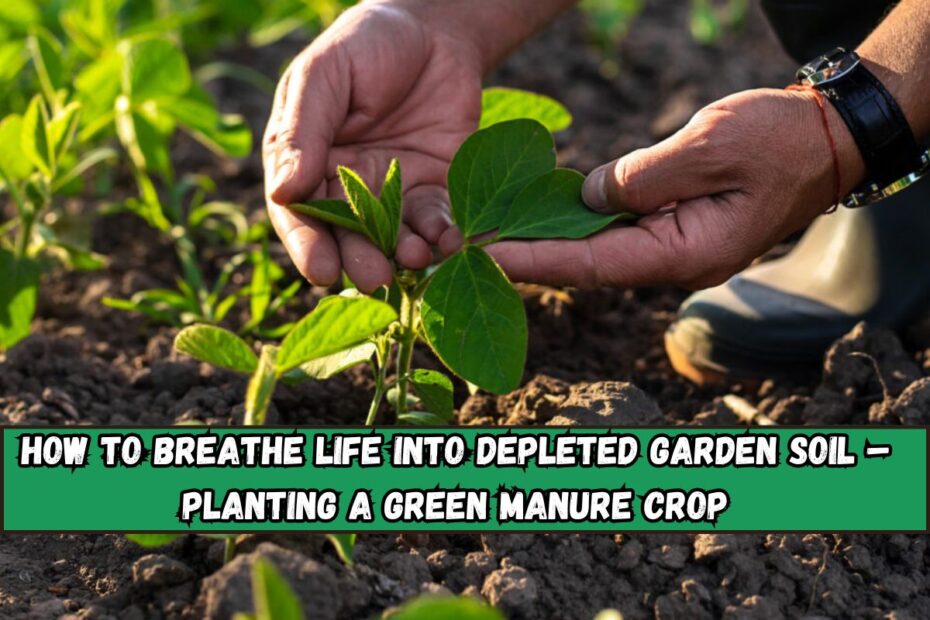How To Breathe Life Into Depleted Garden Soil – Planting A Green Manure Crop: When garden soil is too low, plants don’t grow well and yields aren’t very good. The earth loses its nutrients over time because of constant planting, washing away, and bad weather. Planting a green manure crop is one of the best ways to get the land healthy again.
How To Breathe Life Into Depleted Garden Soil – Planting A Green Manure Crop
Not only do green waste crops add nutrients to the soil, they also improve its structure, keep weeds down, and make it better at holding water. This method is sustainable and good for the environment. It will help your soil grow plants that are healthier and more effective.
What Is a Green Manure Crop?
Green manure crops are plants that are grown so that they can be tilled back into the ground to make it better. Most of the time, these are fast-growing crops like brassicas, grasses, and legumes that make a lot of organic matter. When these plants are fully grown, they are cut down and added to the soil, where they break down and add nutrients like nitrogen and organic matter.
Benefits of Green Manure Crops
Restores Nutrients: Some plants used for green manure, like legumes, can fix nitrogen from the air into the earth. This makes this important nutrient available for future crops.
As green manure plants break down, they add organic matter to the soil, which makes it better at holding water and having a structure. This is especially helpful for grounds that are hard to work with or that tend to dry out quickly.
Weed Control: As green manure crops grow, they crowd out weeds. They also help stop future weed growth when tilled under.
Stops Soil Loss: These crops cover the land and keep it from washing away in wind or heavy rain, especially in the fall and winter.
Encourages Soil Microbial Activity: The organic matter in green manure feeds helpful soil microorganisms, which are very important for breaking down organic matter into forms that plants can use.
Choosing the Right Green Manure Crop
What kind of green manure crop you pick will depend on your soil’s needs and the time of year you grow. These plants are often used as green manure:
Legumes (Peas, Beans, Clover): Legumes are great for areas that don’t have a lot of nitrogen because they fix nitrogen in the soil. You can plant them in the spring or the fall.
Rye, oats, and barley are grasses. When tilled into the earth, grasses make it stronger and add a lot of organic matter. They also keep the soil from washing away, and you can put them in the fall to keep it safe over the winter.
Brassicas (Mustard, Radish, and Turnip): These plants are known for eliminating pests and diseases that come from the soil. In particular, mustard can help lower the number of nematodes in the soil.
When and How to Plant Green Manure Crops
You can plant green manure crops in either the spring or the fall, based on when you like to garden. If you plant in the spring, let the green manure grow for a few weeks before you plant your main crops. To protect the earth through the winter, plant the green manure in the fall after the summer crops are harvested.
Cut the green manure crop down when it gets to be about 6 to 12 inches tall and mix it into the soil. This can be done with a spade or a plow. To make sure the nutrients get into the earth properly, let the plant matter break down for two to three weeks before planting anything else.
Conclusion
A natural and easy way to improve yard soil that has been worn down is to plant a green manure crop. If you plant and till the soil correctly and choose the right crop for your soil’s needs, you’ll return important nutrients, make the soil stronger, and make it a healthy place for future crops.
This eco-friendly method will not only help your garden, but it will also help long-term gardening habits for years to come.
